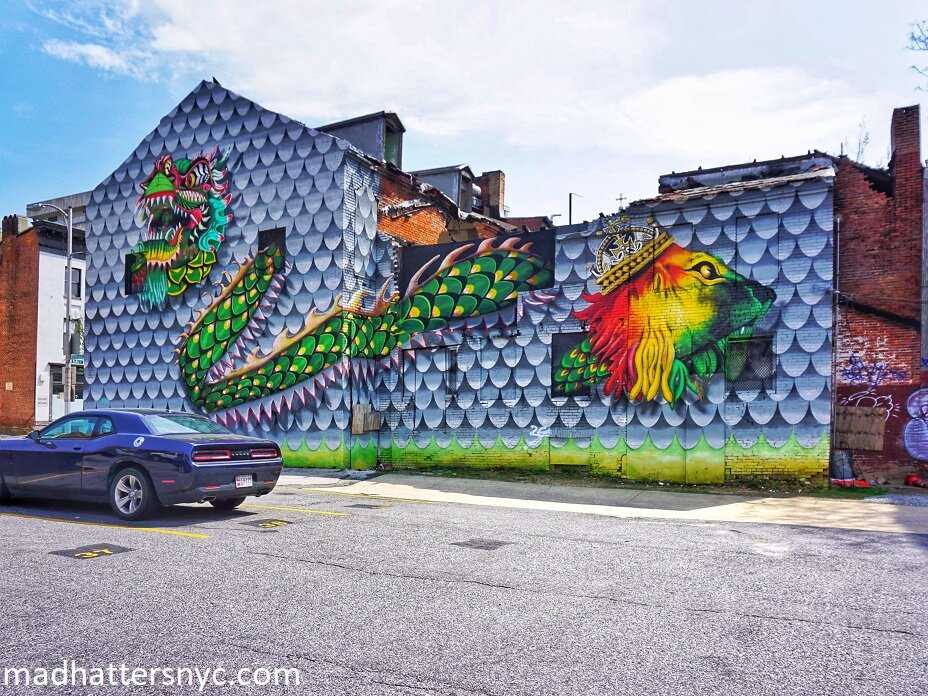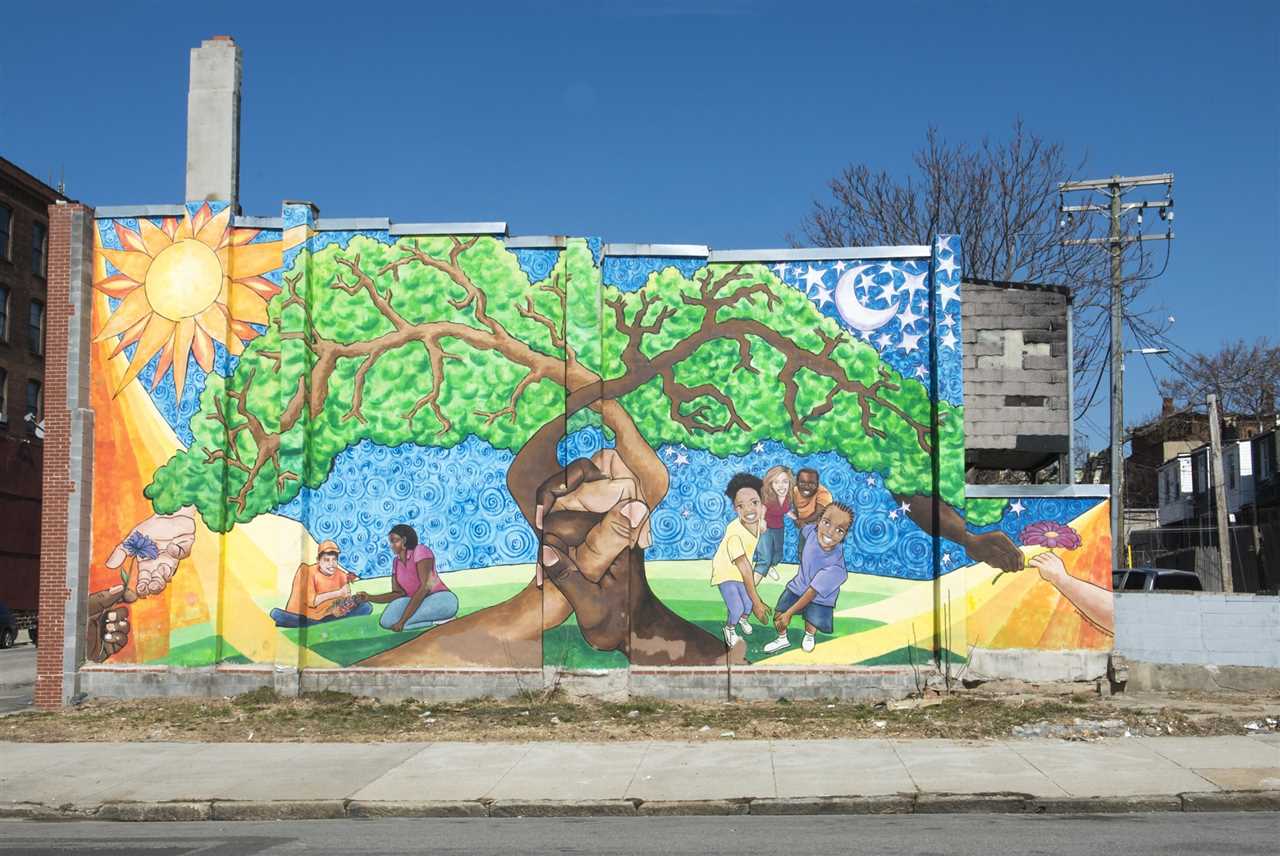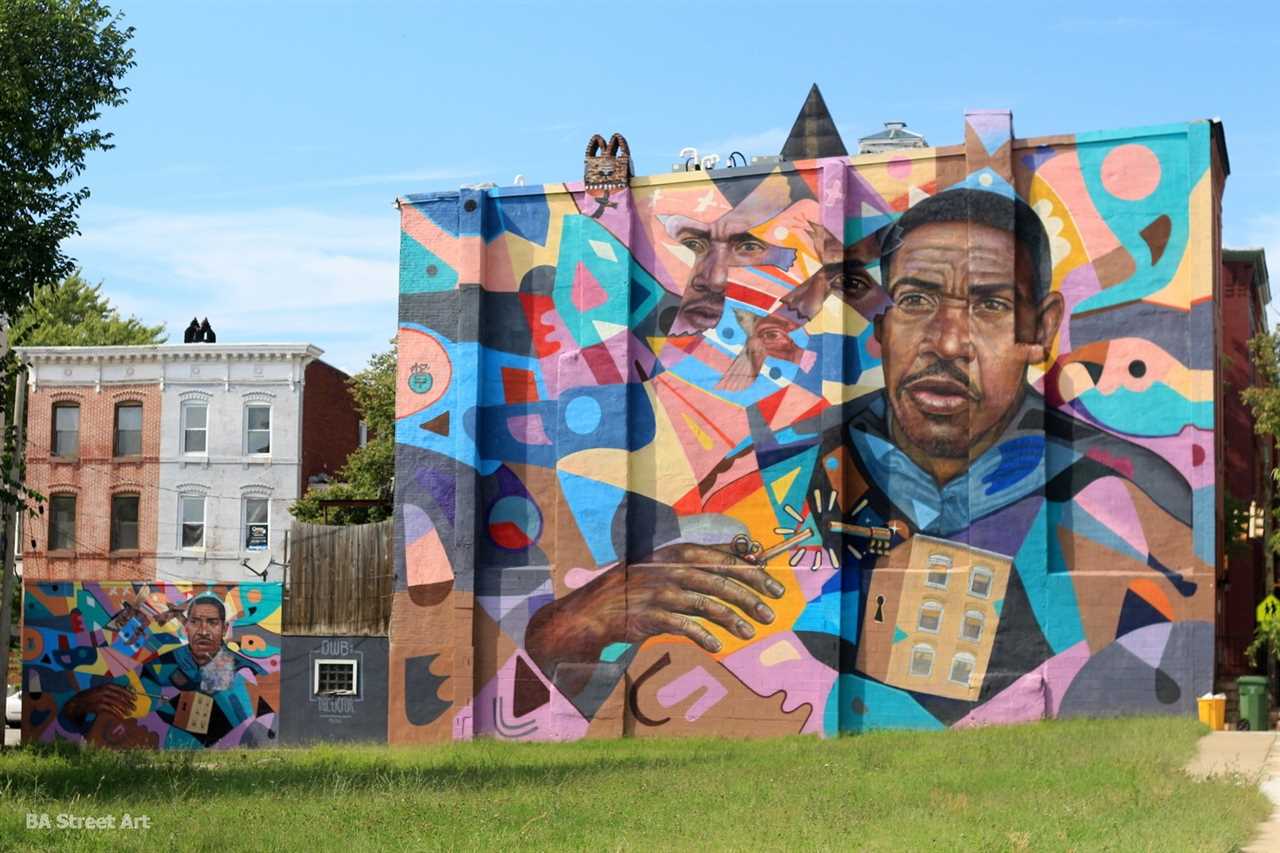
Baltimore is a city known for its vibrant and diverse art scene, and one aspect of that scene that has received widespread attention is the city’s street art. These urban masterpieces can be found all over the city, transforming ordinary buildings and walls into captivating works of art.
What sets Baltimore street art apart is its unique blend of creativity, talent, and social commentary. Local artists use their skills to address a variety of issues, from social justice and inequality to environmental concerns and cultural identity. The art is not only visually stunning but also serves as a powerful medium for sparking conversations and raising awareness.
One of the most notable aspects of Baltimore street art is the sense of community it fosters. Many artists collaborate with one another to create large-scale murals, while others use their work to highlight and support local businesses and organizations. Through their art, these artists are able to build connections and create a sense of unity among Baltimore residents.
Whether you’re exploring the bustling streets of downtown Baltimore or venturing into the city’s neighborhoods, you’re sure to stumble upon a graffiti-covered alleyway or a colorful mural. These hidden gems not only beautify the city but also contribute to its cultural fabric. Baltimore street art is a testament to the city’s creative spirit and serves as a reminder of the power of art to inspire, provoke, and unite.

The history of street art in Baltimore dates back to the 1970s, when the city faced economic decline and social unrest. During this time, many artists turned to the streets as a way to express their creativity and make a statement about the issues affecting their communities.
One of the earliest forms of street art in Baltimore was graffiti, which often appeared on buildings and train cars. This form of art allowed artists to claim their presence and use the city as a canvas for their ideas.
As the city began to recover in the 1990s, street art started to evolve and take on different forms. Artists began using stencils, stickers, and wheatpaste to create their works, allowing for more intricate and detailed designs.
The street art scene in Baltimore continued to grow in the 2000s, with artists from all over the city and beyond coming together to create murals and installations. These works often explored themes such as social justice, racial inequality, and the city’s rich history.
Today, Baltimore’s street art scene is vibrant and diverse, with artists pushing the boundaries of what is possible in public spaces. The city has embraced street art as a form of cultural expression and has even created dedicated spaces for artists to showcase their work.
Whether it’s a colorful mural, a thought-provoking installation, or a hidden gem tucked away in an alley, Baltimore’s street art continues to captivate and inspire both residents and visitors alike.
Murals

Baltimore is known for its vibrant street art scene, and the city is adorned with numerous murals that showcase the diverse artistic talent found here. These larger-than-life paintings can be found on the sides of buildings, alleys, and other public spaces, adding color and creativity to Baltimore’s urban landscape.
History of Murals in Baltimore

Mural art has a rich history in Baltimore, dating back to the mid-20th century when the city began commissioning public artworks to beautify neighborhoods and foster a sense of community. Since then, murals have become an integral part of Baltimore’s cultural fabric, with artists using walls as canvases to express their creativity and engage with the local community.
Themes and Styles

The murals in Baltimore cover a wide range of themes and styles, reflecting the diverse perspectives and experiences of the artists. Some murals pay homage to Baltimore’s rich history and cultural heritage, featuring iconic figures, landmarks, and events. Others address social and political issues, raising awareness and sparking conversations about topics such as racial justice, inequality, and environmental sustainability.
In terms of style, Baltimore’s murals encompass various artistic techniques, from realistic and detailed portraits to abstract and graffiti-inspired designs. Many artists embrace vibrant colors and bold patterns, creating eye-catching visuals that brighten up the city’s streets and inspire passersby.
| Name of Mural | Location | Artist |
|---|---|---|
| The Baltimore Sun | 501 N Calvert St | Michael Owen |
| The Divine | 31 W North Ave | Graham Coreil-Allen |
| We Stand United | 113 W Lombard St | Erin Stellmon & Justin Nethercut |
Graffiti

Graffiti is one of the most prominent forms of street art in Baltimore. It is a form of artistic expression that involves creating visual compositions using spray paint on public walls, buildings, and other surfaces. This unique art form has become an integral part of Baltimore’s urban landscape, contributing to its vibrant and dynamic atmosphere.
Baltimore’s graffiti scene is known for its diverse range of styles and themes. Artists often use graffiti as a means of social and political commentary, addressing issues such as inequality, racism, and urban decay. In addition to political messages, graffiti in Baltimore also showcases the talent and creativity of local artists, providing a platform for self-expression and artistic exploration.
Legal vs. Illegal Graffiti

In Baltimore, graffiti can be categorized into two main types: legal and illegal. Legal graffiti refers to artwork that is created with permission from property owners or as part of a sanctioned street art project. These pieces can often be found in designated graffiti zones or on walls and buildings that have been designated for artistic expression.
On the other hand, illegal graffiti refers to unauthorized artwork that is created without permission on public or private property. Although illegal graffiti is often seen as vandalism, it plays a significant role in Baltimore’s street art scene. Many artists view illegal graffiti as a form of protest and see it as a way to challenge societal norms and expectations.
Symbolism and Techniques

The graffiti in Baltimore often incorporates a wide range of symbols and techniques. Artists use various symbols and imagery to convey their messages, such as political symbols, cultural references, and personal symbols. These symbols can add layers of meaning to the artwork, inviting viewers to interpret and engage with the piece on a deeper level.
In terms of techniques, graffiti artists in Baltimore employ various spray painting techniques to create their artwork. They use stencils, freehand techniques, and other innovative methods to achieve different effects and styles. This diversity in techniques adds to the richness and complexity of Baltimore’s graffiti scene, making it a captivating and dynamic art form.
Street Art Community

One of the defining characteristics of the street art community in Baltimore is their sense of community and collaboration. Artists often work together on large-scale projects, combining their individual styles and techniques to create unique and visually stunning pieces. This collaborative spirit not only brings artists together, but also fosters a sense of pride and ownership in the art that can be seen around the city.
Another important aspect of the street art community in Baltimore is their focus on social and political issues. Many artists use their work as a form of expression and activism, addressing topics such as poverty, racial inequality, and social justice. Through their art, these artists aim to raise awareness and spark conversations about these important issues within the community.
The street art community in Baltimore also plays a significant role in revitalizing and beautifying the city. Blank walls and abandoned buildings are transformed into vibrant works of art, adding color and personality to the urban landscape. In addition, street art often attracts tourists and visitors, contributing to the local economy and cultural scene.
| Benefits of the Street Art Community |
|---|
| 1. Beautifies the city |
| 2. Raises awareness of social issues |
| 3. Fosters a sense of community and collaboration among artists |
| 4. Attracts tourists and visitors |
Influence on the City

Baltimore’s vibrant street art scene has had a profound influence on the city and its residents. The art not only brightens up the cityscape, but it also serves as a platform for social commentary and cultural expression.
One major way in which street art has influenced the city is by fostering a sense of community. Local artists often collaborate with neighborhood organizations and businesses to create murals that reflect the unique character of each area. This collaboration not only beautifies the streets but also brings residents together, creating a shared sense of pride in their neighborhood.
Street art has also had an economic impact on the city. Areas that were once overlooked or ignored have become destinations for locals and tourists alike, all eager to see the vibrant and ever-changing art on display. This increased foot traffic has led to a revitalization of businesses in these areas, with new shops, restaurants, and galleries opening up to cater to the influx of visitors.
In addition to making the city more visually appealing and economically prosperous, street art has also served as a form of cultural preservation. Many of the murals in Baltimore depict important figures in the city’s history, paying homage to their contributions and ensuring that their stories are not forgotten. These murals serve as a reminder of the city’s rich heritage and provide a source of inspiration for future generations.
Overall, the influence of Baltimore’s street art scene cannot be understated. It has transformed the cityscape, fostered a sense of community, boosted the local economy, and preserved the city’s cultural heritage. Through their creativity and talent, street artists have made Baltimore a more vibrant, inclusive, and culturally rich place to live and visit.

I am a mural enthusiast and a fervent admirer of street art. Rather than creating murals myself, I am passionate about collecting them. My love for street art knows no bounds. I am dedicated to curating and cherishing these artworks that grace the streets. My collection stands as a testament to my profound appreciation for this form of artistic expression.
read about me



